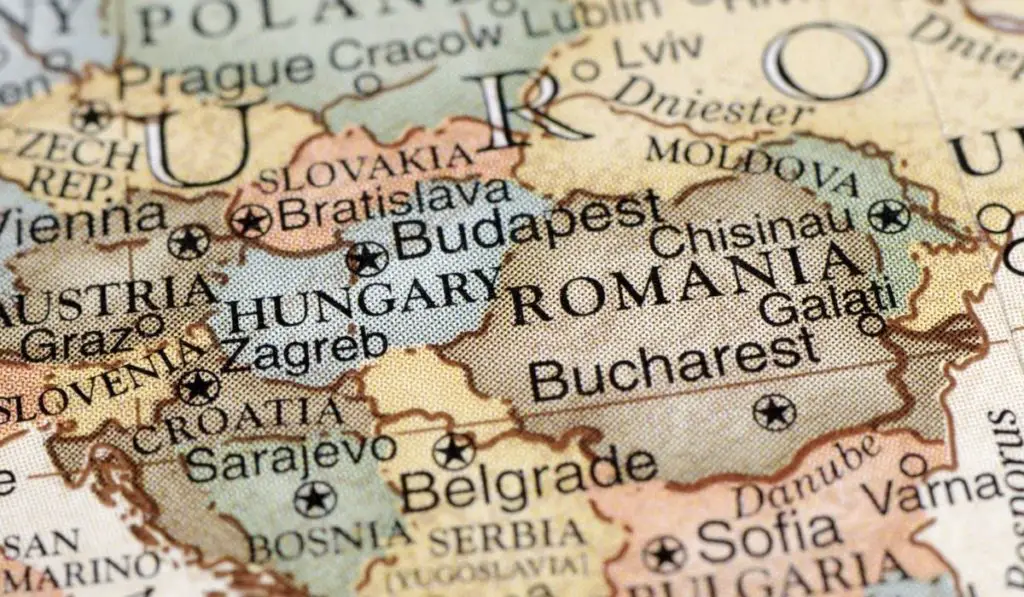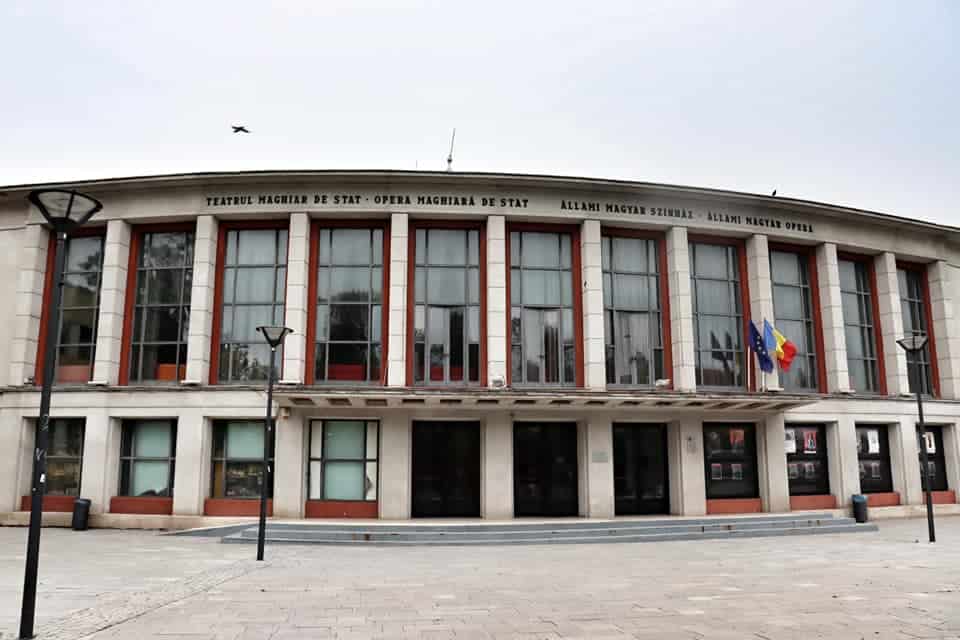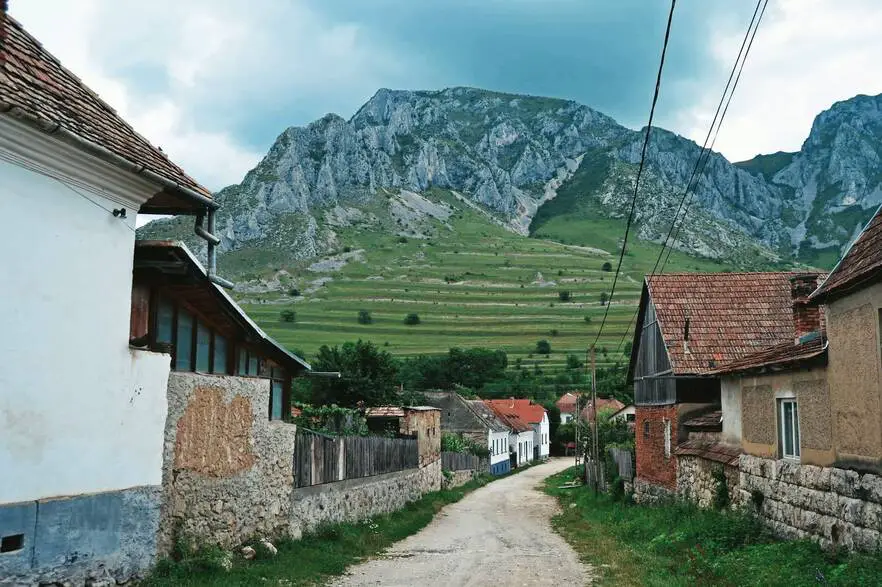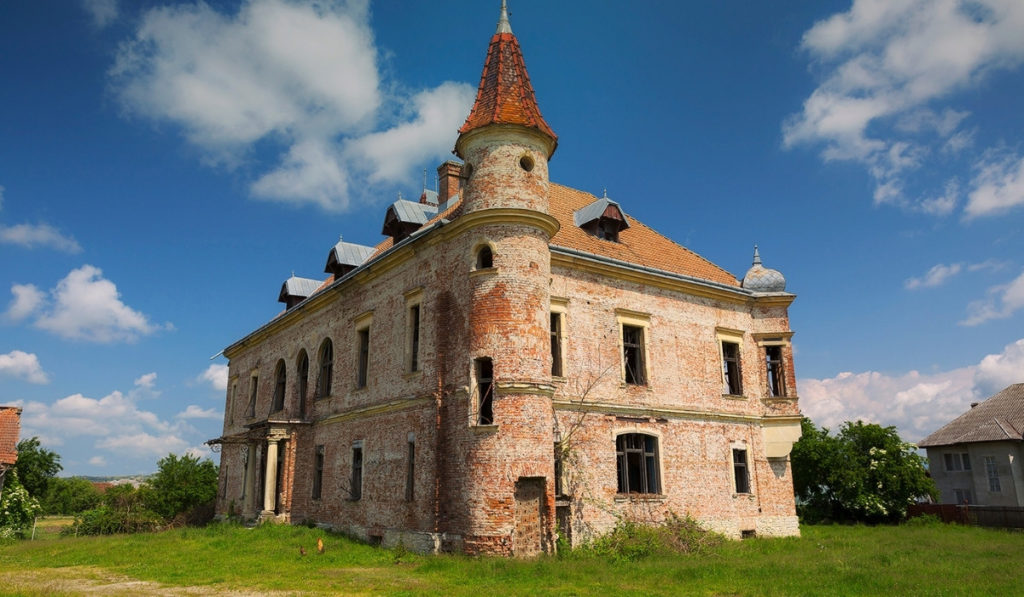This post may contain affiliate links. At no cost to you, purchases made through these links may result in a small commission for Traveling Transylvania. We never recommend products that we don’t know and trust. Thank you for your continued support!
Transylvania, a name often associated with tales of vampires and gothic castles, boasts a rich tapestry of history and culture that extends far beyond popular mythology. Situated in the heart of Europe, this region is a melting pot of influences, with a complex identity shaped by its historical affiliations, primarily with Hungary and Romania. This article aims to delve deep into the intriguing question, “Is Transylvania Hungarian or Romanian?” by unfolding its historical journey and understanding the unique position of Transylvania Hungarians.
The Geographic and Historical Overview of Transylvania

Transylvania, known as “Erdély” in Hungarian and “Ardeal” in Romanian, is a historical region located in the central part of Romania, nestled in the Carpathian Mountain range. Its name translates to “the land beyond the forest” – a moniker that perfectly encapsulates its idyllic and rugged landscapes. However, beneath this serene setting lies a history filled with shifting allegiances and contested territories.
The history of Transylvania is characterized by its strategic location at the crossroads of Central and Eastern Europe, resulting in a blend of cultures, ethnicities, and languages. Tracing its roots back to the ancient Dacians, the region has seen various occupiers from the Romans, Ottomans, to the Habsburg Empire. However, its most significant historical ties lie with Hungary and Romania.
Transylvania Under Hungarian Rule
From the 10th to the early 20th century, Transylvania was part of the Kingdom of Hungary. The region was first absorbed into Hungary around 1000 AD, under the rule of King Stephen I. During this period, the demographics of Transylvania transformed significantly, with a large influx of Hungarians (Magyars) and Germans (Saxons), who were invited to settle and defend the kingdom’s frontiers.
The Middle Ages saw Transylvania flourish under Hungarian rule. Its strategic position helped it become a vital political, economic, and cultural center. The co-existence of various ethnicities, including Romanians, Hungarians, and Saxons, led to a multi-ethnic society. This period witnessed the establishment of the distinct Hungarian identity in Transylvania, significantly influencing its culture, language, architecture, and societal structures.
Transylvania Under Romanian Rule
The tides of history turned at the end of World War I when the Treaty of Trianon in 1920 transferred Transylvania from Hungary to Romania. This transition brought about considerable changes as the Romanian government initiated a process of “Romanianization” of the region, promoting Romanian language, culture, and identity.
The effects of this shift were profound on the Hungarian minority. They suddenly found themselves in a new national context, facing an unfamiliar official language and new policies that favored the Romanian majority. Despite these changes, the Hungarian community in Transylvania remained resilient, maintaining their cultural and linguistic heritage.
Transylvania’s identity today is inextricably linked to its past affiliations with both Hungary and Romania.
Understanding the Transylvania Hungarians
Living as a significant minority in Transylvania, the Hungarian community, often referred to as ‘Transylvania Hungarians’, represents an essential part of the region’s cultural diversity. They are a testament to Transylvania’s storied past, embodying its dual Hungarian and Romanian influences.
The Hungarian community in Transylvania, despite the region’s Romanian majority, has maintained a vibrant and unique culture. This cultural preservation is manifested in their everyday life, from language and traditions to festivals and gastronomy.
The Hungarian Language in Transylvania
Language, being a crucial aspect of cultural identity, plays a significant role in the Hungarian community of Transylvania. Even after being incorporated into Romania, the Hungarian language has remained prevalent among the Hungarian minority.
The use of the Hungarian language in public life, media, education, and administrative matters has been an ongoing struggle and a source of tension between the Hungarian community and the Romanian state. Despite these challenges, many Transylvania Hungarians continue to use Hungarian as their first language, fostering a sense of community and preserving their linguistic heritage.
For context, during my stay in a Romanian hospital, I observed another intriguing facet of Transylvania’s linguistic landscape. I encountered Hungarians who, despite their proficiency in English, lacked fluency in Romanian.
The Hungarian Culture in Transylvania

The cultural landscape of Transylvania is replete with Hungarian influences. From the architectural marvels that bear testimony to the period of Hungarian rule, to the traditional Székely gates that adorn houses in several Transylvanian villages, such as Rimetea, Hungarian culture is deeply ingrained in the region.
Furthermore, numerous cultural events and festivals celebrate Hungarian history and folklore. Events such as the Hungarian Cultural Days of Kolozsvár or the Csíksomlyó Pilgrimage draw large crowds of local Hungarians and visitors from Hungary each year. Through folk dances, music, traditional costumes, and culinary delights, these events foster a sense of community and cultural continuity among Transylvania Hungarians.
Hungarian culture also flourishes in Transylvanian education and arts. Several schools and universities offer education in the Hungarian language, and Hungarian theater and literature thrive in the region.
Despite being a minority, Transylvania Hungarians have managed to preserve their unique cultural and linguistic identity, a testament to their resilience and historical roots. However, the question remains: is Transylvania Hungarian or Romanian? The answer is far from straightforward and lies in the nuanced understanding of the region’s current status and the perspectives of both Romania and Hungary.
Challenges Faced: Prejudice Against Hungarians in Transylvania
Despite the rich cultural blend that characterizes Transylvania, the region has also witnessed instances of ethnic tension and discrimination, particularly targeting the Hungarian minority. Such experiences not only influence the relationship between the Hungarian community and the majority Romanian population but also significantly impact the community’s sense of security and identity.
Many Transylvania Hungarians report experiencing varying degrees of discrimination, ranging from subtle social biases to institutional disadvantages. A key issue pertains to language rights. For instance, despite guarantees in the Romanian constitution, the use of the Hungarian language in public administration and justice remains limited in areas with a substantial Hungarian minority. This linguistic marginalization can lead to a feeling of disenfranchisement among the Hungarian community.
There have been instances where Hungarian cultural symbols and commemorations have been met with resistance or even banned, sparking tensions and allegations of cultural discrimination. For instance, the Székely flag, a symbol of Hungarian identity in Transylvania, has been the center of several controversies.
Racism also manifests in everyday social interactions. Anecdotal evidence suggests instances of negative stereotyping, verbal abuse, or prejudice against Hungarians, fueled by historical grievances and nationalist sentiment.
In the course of my personal experiences, I once witnessed a distinct manifestation of this ethnic prejudice during a bus ride in Cluj-Napoca, while I was with my husband. We found ourselves sitting next to a family of Romanian tourists visiting Cluj, who, oblivious to my husband’s Hungarian roots, engaged in disparaging conversation about Hungarians. This incident served as a definite reminder of the undercurrents of prejudice that sometimes tarnish the city’s multicultural reputation.
Finally, although both Romania and Hungary are members of the European Union, their statuses differ when it comes to the Schengen Area, with Romania still outside its boundaries. This discrepancy significantly influences the privileges granted to holders of Hungarian and Romanian passports, especially with respect to travel to the United States. Case in point, individuals possessing a Hungarian passport but born in Romania, much like my husband, must navigate the extra bureaucratic step of securing a visa for US travel, a requirement not applicable to Hungarians born within Hungary’s (current) borders.
The impact of these experiences on the Hungarian community is significant. It fosters a sense of alienation and challenges their cultural preservation efforts. It also leads to a stronger alignment with Hungary, reinforcing the sentiment of a separate Hungarian identity in Transylvania.
The Current Status: Is Transylvania Hungarian or Romanian?
Transylvania’s current status is as complex and layered as its history. Today, Transylvania is an integral part of Romania. However, the question, “Is Transylvania Hungarian or Romanian?” stems from its historical affiliations, demographic composition, and ongoing cultural, linguistic, and political dynamics.
The Romanian Perspective
From the Romanian perspective, Transylvania is indisputably Romanian. Its annexation in 1920, as part of the Treaty of Trianon, and subsequent international recognition, cemented its status as a region of Romania. Today, Romanians form the majority population in Transylvania, and the region contributes significantly to Romania’s cultural, economic, and political landscape.
Historically, Romanians trace their ancestry in Transylvania back to the ancient Dacians, which they argue gives them the oldest claim to the region. Additionally, they perceive the period of Hungarian rule as an occupation, making the return of Transylvania a rectification of historical injustice.
The Hungarian Perspective
The Hungarian perspective, on the other hand, is rooted in historical claims and concern for the Hungarian minority living in Transylvania. For many Hungarians, the Treaty of Trianon is seen as a national tragedy that unjustly severed Transylvania from Hungary, disrupting the country’s territorial integrity. This sentiment is particularly strong among Transylvania Hungarians, many of whom still feel a strong connection to Hungary.
Hungary’s interest in Transylvania today is primarily driven by its concern for the rights, culture, and identity of the Hungarian minority in Transylvania. Many in Hungary perceive the Romanianization policies and instances of discrimination against the Hungarian minority as a threat to their cultural survival.
The status of Transylvania continues to be a sensitive topic in Romanian-Hungarian relations. However, both countries are now part of the European Union, providing a platform for dialogue and collaboration, and hopefully, a means to address minority rights issues and promote multicultural understanding. In conclusion, the question of whether Transylvania is Hungarian or Romanian does not have a straightforward answer. It depends on one’s perspective – a testament to the region’s complex history and identity.
Transylvania Today: A Land of Coexistence

Transylvania, with its storied past and cultural amalgamation, is not merely a region of historical interest but a vibrant, living landscape that continues to evolve. Today, it stands as a testament to multicultural coexistence, even amidst occasional tensions.
Transylvania is home to a rich tapestry of cultures. Although the majority of the population is of Romanian descent, there is a significant minority of Hungarians, along with smaller communities of Roma, Germans, and others. Each of these communities contributes to the region’s multicultural ethos, making it a melting pot of languages, traditions, and lifestyles.
Education in Transylvania reflects its multiculturalism. There are schools that offer education in minority languages, including Hungarian and German, fostering linguistic diversity. Universities in cities like Cluj-Napoca and Târgu Mureș also offer courses in multiple languages, promoting academic inclusivity.
The Shared History and the Unresolved Questions
Transylvania, a land shrouded in mystery and cloaked in the annals of complex historical narratives, remains a fascinating case of coexisting identities. Its historical affiliations with both Hungary and Romania have sculpted a multifaceted cultural and ethnic landscape, with the Transylvania Hungarians embodying this unique intersection.
As this exploration suggests, the question “Is Transylvania Hungarian or Romanian?” cannot be answered conclusively. While geographically and politically it is Romanian, the region’s history and the presence of a significant Hungarian minority intertwine the narratives of both nations. The shared history, overlapping cultural imprints, and ethnic ties add layers of complexity to Transylvania’s identity, making it as Romanian as it is Hungarian in different respects.
Transylvania Hungarians, meanwhile, continue to thrive, preserving their language, culture, and traditions, all while living as a minority in a Romanian majority region. Their presence underscores the importance of understanding, respecting, and protecting minority rights, while celebrating cultural diversity.
Ultimately, the case of Transylvania encourages us to delve beyond borders and political affiliations, and instead appreciate the richness that comes from centuries of shared histories and multicultural coexistence. By doing so, we can hope to foster mutual respect, understanding, and harmony among diverse cultural communities.


